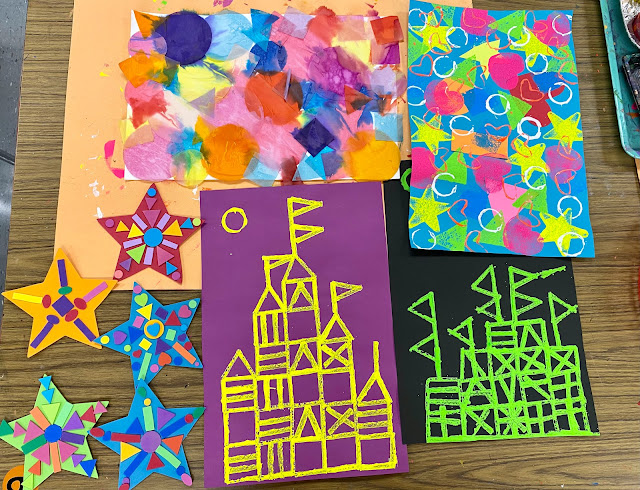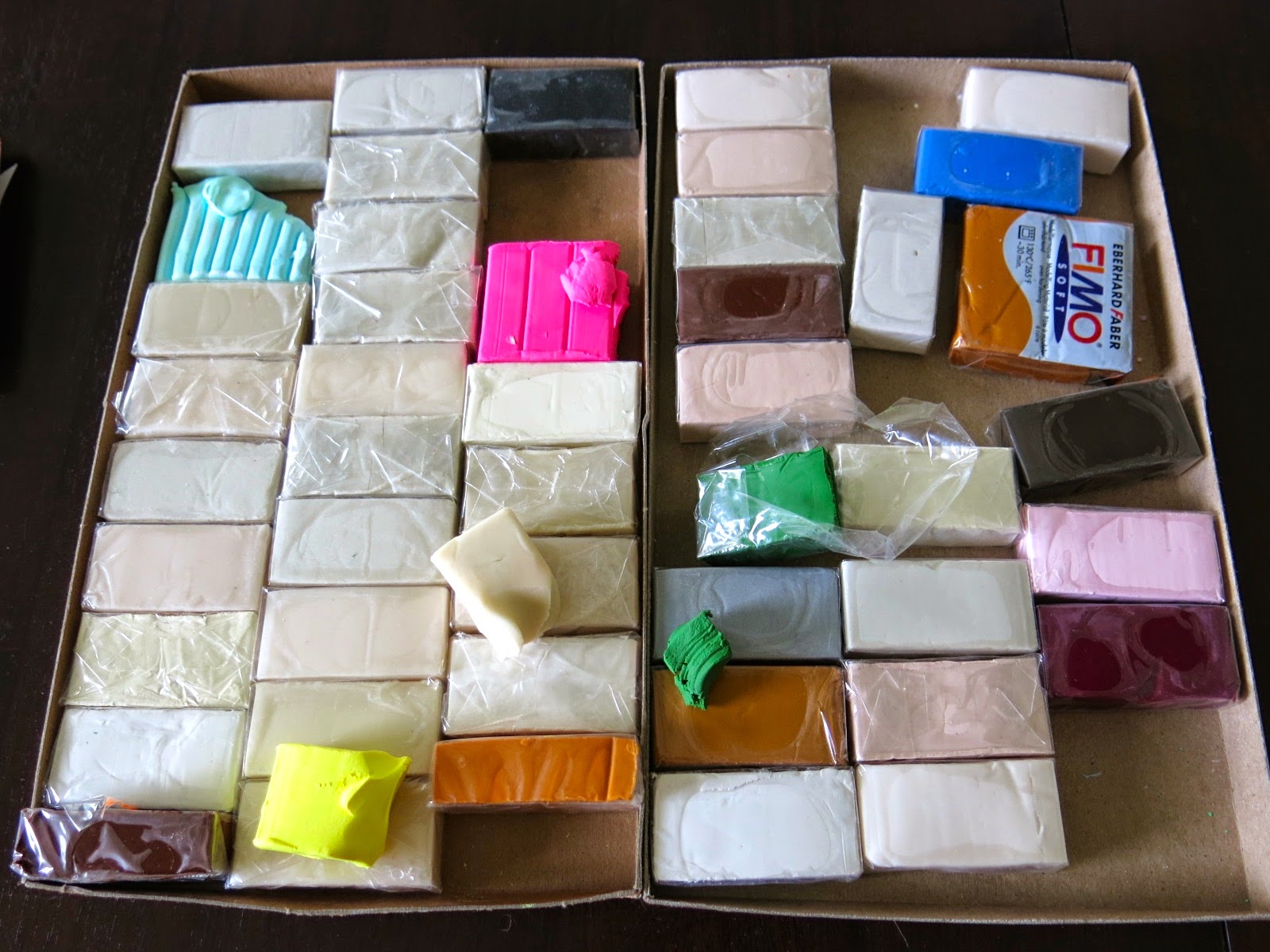Hey guys, if you've not entered the UncommonGoods Giveaway yet, scoot yourself over here and do it! The come back for this here post. Thanks!
Hi, y'all! I'm here today to share with you some of the latest kindergarten masterpieces that the wee-est of wee ones have been creating in the art room. Because these lil dudes had never been to art before coming to me, I like to start with the super duper basics. Like the elements of art! Which is why, at the start of the year, I introduce 'em to a big fat hairy unit on line. We create paper line sculptures, paint a variety of lines, create abstract line paintings. Y'all, we are all about lines. And since a line creates a shape, shape is our next unit o' study!
But, before I get to said unit, can we chat about painting with small children for a moment, puh-lease? Let's be honest: they don't come by this kind of loveliness without a whole lotta proper painting how-to's, am I right? Namely, how not to jack up the paint tray (which also translates to "how not to drive your art teacher to drink the paint water"). My kindergarten kids pretty much hit the ground painting. And I've found that with lots of practice and constant reminders of proper painting technique, they can do just about anything.
So, what do I tell 'em? The same thing every time we paint, from kindergarten all the way on up to fourth grade. It sounds a lil like this:
"Remember! Your paint brush is like a ballerina. She always dances on her tippy-toes. So you only need to put paint on her toes. She never scoots around on her bottom. So we would never smash our brush into our painting. It will ruin your ballerina's toes! And she won't be able to paint you a beautiful masterpiece. "
So, that's Thing One. Thing Two is all about changing colors from one to the next. I don't know what your paint set up is but mine goes a lil sumpthin like this: paint colors distributed in empty egg cartons, two per table of four children (I'm currently a Versa Temp by Sax paint convert. I looove this paint!); tray of water for cleaning and sponges for wiping excess water, two per table of four. And then my lil reminder routine for cleaning goes like this:
"Before you get a new color, your ballerina needs to take a bath. Put your brush in the cup of water and you should hear that paint brush scrub the bottom. It should sound like it's brushing it's teeth! Don't tap your brush on the cup, it will splash on your neighbor's painting! Instead, gently wipe your brush on Dirty Ole Sponge Bob (what we call our filthy painty sponges). Now you're ready for your new color!"
I have found that by making the process of painting and cleaning the brush silly and fun, the kids will do it. Sometimes we'll tell our brushes, "oh! Time to take a bath!" or "Ballerina! Do not scoot on your bottom!" It's hilarious to hear the kids having a full blown convo with their paint brush. But, hey, whatever works, right? So long as the principal doesn't walk in and wanna know why the kids are chatting with animate objects and drag 'em to the guidance counselor.
Now! On to shapes!
So when I introduce the kids to shapes, I go about it a coupla ways. First we take a gander at this book. I love Lois Ehlert's books, don't you? This book especially is great because the shapes are bold and beautiful and easy for the kids to see. We count them, name them and count their number of sides. Going through this book with the kids helps me gain an understanding of their knowledge of shapes. As does playing a short round of this game.
Which is why I love this lil handout from guruparents.com. My students are well beyond circles and squares and are now in deep with trapezoids and parallelograms. I used this handout to make flashcards that we run through at the start of our lessons based on shape. We even did a couple vocab games just to get those words stuck in our heads. Here's a lil clip of some of the vocab games we play.
Now, you can go about creating this shape box a coupla ways. Either have the kids create the box from two strips of black paper (which is great because they'll learn how to make a square but also sucks because it will take them a million years to make said square). OR you can have a glorious parent volunteer bust 'em out in less than 15 minutes. Which is what I opted to do after a class of kinder-kids spent entirely too much time creating a box and not having enough time to create the rest of their shapes.
So, let's talk shape making. How'd they make 'em? Well first you start with a strip of paper which is a line. Then ask them..."how can this line become a circle?" Immediately, they'll respond that you need to glue one end to the other. Then show them that if you pinch it once...it's a drop shape! Pinch it twice...you have a crescent! Three times, viola, a triangle. And four, well, perhaps a square or a rectangle, you decide.
Kids found ways to create hearts and even stars. That pretty much made my day.
What to do after that? Paint shapes, of course! We had many a chat about painting different shapes. The kids were intent on learning to paint stars and hearts. So many demos were given. I also have the tables covered in paper. I always encourage the kids to "practice and paint on the table". This way, once they feel comfortable, they can then paint on their paper.
By the end of the first day, their paintings looked a little like this. We talked about how to create "rainbow shapes" by outlining the shapes in different colors.
And one last painting day. It was funny, when some of the kids were finished and put their paintings on the drying rack, they asked if they could work on their shape sculptures again. Ermkay (cue Twilight Zone music).
Now, lest you think we be el finito with this here unit o' shapes, we've got some more work ahead of us. I'm 'bout to introduce organic shapes to these dudes with one of my fave artists, Henri Matisse. Tis time these kids take to creating some scissor-shapes, don't you think?
Til then!













































.jpg)




























